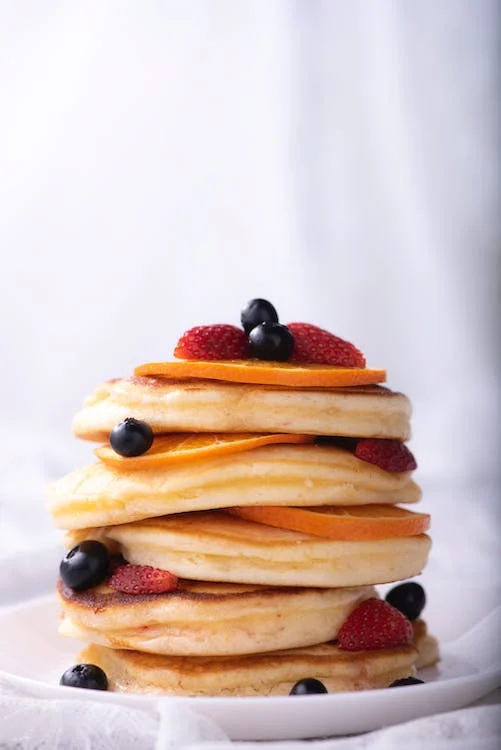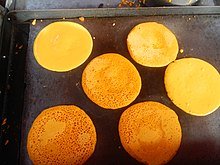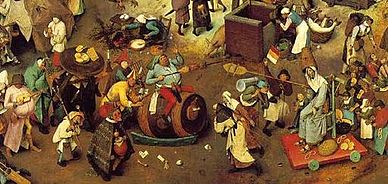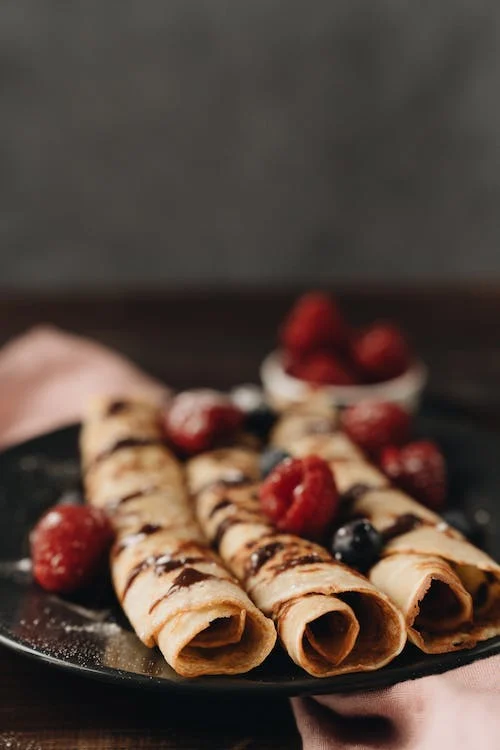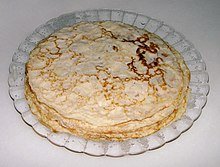Pancakes are widely thought of as an American breakfast staple, but there are several versions of this delectable dish all over the world. Some might imagine pancakes as being round, fluffy, and covered with maple syrup, while others think of them as a savory option.
Today, we have blueberry pancakes, Japanese pancakes, and even keto-friendly pancakes available at different restaurants. The base recipe might be the same, but little tweaks and touches have changed the experience of pancakes according to various cultures. Looking at the history of this particular food could be a fun exercise, so let’s start at the beginning:
How Pancakes Originated
It shouldn’t be surprising that pancakes have been a breakfast staple for several cultures over the years. In fact, there’s some evidence that shows us how pancakes could have been around in the Stone Age, over 30,000 years ago. There are some human remains that go back more than 5,000 years; these were found to have the remnants of a pancake meal in the stomach.
It’s estimated that cooks in the Stone Age made pancakes from ferns and cattails, mixed into a batter with water and baked on greased rocks. These pancakes were probably very different from the modern versions we have today. However, the main idea of a flat fried batter cake was the same.
Going forward to Ancient Rome and Greece, we know that the pancakes in this culture were made of wheat flour, curdled milk, honey, and olive oil. Even the Ancient Greek poets, such as Magnes and Cratinus, mentioned pancakes within their works. Shakespeare himself mentioned pancakes in some of his plays. The pancakes during the English Renaissance were flavored creations; using sherry, spices, apples, and rosewater for a unique taste.
With pancakes being so widespread today, they’ve become a firm fixture in pop culture as well. We can see them featured in several movies and TV shows, sometimes even being central to the main plot.
The Naming of Pancakes
“Pancake” might seem like the only standard term for this recipe, but it actually only became popular in the 19th century within the United States. However, the term itself was introduced in the 15th century. Before this, they would be called hoe caked, journey cakes, Indian cakes, Johnny cakes, buckwheats, griddle cakes, flapjacks, and a number of other names. There were also Early American pancakes, which were made using corneal or buckwheat. In fact, Thomas Jefferson was so fond of pancakes that he sent a special White House recipe back to his hometown.
This recipe was put together by Etienne Lemaire, a trusted maître d’hotel who was known for his honesty and dessert-making skill. His specialty was panne-quaiques, which were more like crepes than proper conventional pancakes. These were made using a very thin batter as a hot pan. In Jefferson’s era, our modern pancakes would have been known by the name of griddlecakes. These crepes under discussion here had the same recipe but didn’t use a rising agent such as baking powder or baking soda.
Celebrating Pancake Day
There’s a whole Pancake Day for all the pancake lovers out there. This is also known as Shrove Tuesday or Fat Tuesday and is a proper holiday in itself. It involves feasting right before the Lent season starts. As those observing lent aren’t allow any animal products, this holiday is the best time for them to gorge on pancakes made with butter, eggs, and milk.
Since these ingredients were likely to be in lesser demand during Lent, people would utilize them in making a lot of pancakes on Shrove Tuesday. With people consuming large stacks of pancakes on this day, it’s only fitting that it should also be known as the official Pancake Day.
Changes in Pancakes Through the Ages
One of the earliest all-American cookbooks, ‘American Cookery’ by Amelia Simmons, gave a couple of pancake recipes to its readers. One was the hoe cake or Johnny cake, which consisted of Indian meal, molasses, and milk as the main ingredients. The other kind of pancake was the Indian slapjack. This was basically the same recipe, only it eliminated the molasses and used around four eggs.
Pancakes in Different Countries
Pancakes are available all over the world, though we might not always find the ones we’re used to while traveling. Every culture seems to have a pancake of sorts in their cuisine, but these can be so different that we may not even realize the same base recipe.
Pancake options can crop up for all kinds of meals. We can find the different versions in crepes, pooris (Indian), pannenkoeken (Dutch), latkes (German), boxty (Irish), crampog (Welsh), blini (Russian), and palacsinta (Hungarian). They can be savory versions served with curry, or sweet ones with cream, chocolate, and fruit fillings or toppings.
The Saying ‘Flat as a Pancake’
We’ve all heard this saying every now and then, but it might not be as applicable as it seems. Today, whenever we think of pancakes, we think of flatness. Whether it’s the crepe, the blini, or the griddlecake, pancakes are known to be mostly round and smooth, even if they’re a bit puffy.
The catchphrase ‘flat as a pancake’ has been around for centuries; the Oxford English Dictionary says it’s been in use since 1611 at least. However, the application was usually done in a disparaging sense, such as to make fun of a flat land or terrain.
In 2003, a group of geographers with a sense of humor decided to compare the flatness of the Kansas terrain with pancakes. They made a profile of a pancake topography using a sample from the International House of Pancakes. This was accomplished by the use of a confocal laser microscope and digital image processing. The state of Kansas also got a similar profile, after which the two were compared using information given by the United States Geological Survey.
The results of this experiment were published within the Annals of Improbable Research and proved that Kansas was actually even flatter than your regular pancake. Tabletop flatness has a 1.000 value, whereas Kansas had a score of 0.9997. On the other hand, the pancake has a 0.957 score, which is positively lumpy in comparison.
Of course, this comparison is not really fair, as blowing up a pancake to the size of a whole state will leave us with a very rough terrain, There would be craters, holes, and several other irregularities to deal with. However, this experiment and others like it only prove the importance of pancakes in today’s culture.
Conclusion
Pancakes are certainly a part of many different cultures, so their history is also a rich and complex one. They’re mainly looked upon as comfort food, an inseparable part of indulgent brunches and breakfasts. Many families enjoy making and eating pancakes together, especially if it’s a holiday.
Along with pancakes, waffles are also a lovely breakfast staple that many people enjoy. This may be a bit less widespread than the ubiquitous pancake, but looking at the history of the Belgian waffle will probably give us some more detailed information.

